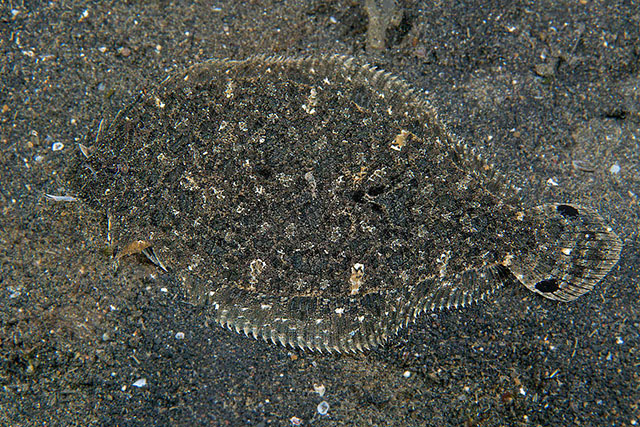| Bothidae (Lefteye flounders) |
| 15 cm TL (male/unsexed) |
|
reef-associated; marine; depth range 7 - 200 m |
| Indo-Pacific: East Africa, throughout the Indian Ocean to the Indo-Australian Archipelago and New Caledonia, north to southern Japan. |
|
Dorsal soft rays (total): 81-87; Anal soft rays: 61-65; Vertebrae: 24-24. This species is distinguished by the following characters: body deeply ovoid; caudal fin with a pair of black blotches, arranged between the third and fourth fin rays from upper- and lowermost rays in the fin; the ocular-side pectoral fin is not elongate, and no sexual differences in its length; gill rakers are very short, not serrate (Ref. 126076).
Description. D 81-87; A 61-65; pectoral-fin rays on ocular-side 10-12, blind-side 8-10; caudal-fin rays 3 + 11 + 3; pelvic-fin rays on ocular-side 6, blind-side 6; lateral line scales 40-45; gill rakers 0 + 5-7; vertebrae 10 + 14 (Ref. 126076). |
| Found on sandy and muddy areas of the continental shelf. Feeds on crustaceans, polychaetes, and other benthic animals (Ref. 9824). Marketed fresh and sometimes dried (Ref. 9824). |
|
Least Concern (LC); Date assessed: 09 March 2015 Ref. (130435)
|
| harmless |
Source and more info: www.fishbase.org. For personal, classroom, and other internal use only. Not for publication.
